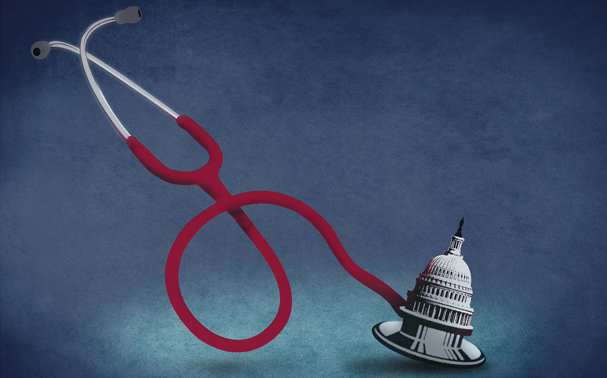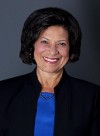By Marilyn M. Singleton, MD, JD
Listening to the campaign promises spewed out
by the bevy of folks running for president brings the old but enduring story of
Faust to mind. Despite being successful, Faust wanted more knowledge and
possessions. To that end, he made a deal with Mephistopheles (aka
the Devil) who promised to give him everything he wanted in exchange for his
soul.
Who isn’t tempted by a bargain or better yet,
something for nothing? Free income, free college, and free medical care. What
do we have to lose? Self-respect, the opportunity to succeed at a career suited
to one’s talents, your privacy and control over your own body.
Intended to ameliorate poverty, universal basic
income can be counterproductive. Some promise income for merely having a pulse and
others envision the government equivalent of a mama bird regurgitating food into
the open mouths of her chicks. Neither option gives a sense of pride and
accomplishment or the foundation for character development.
The high cost of college is
the justification for free tuition. One key reason for
the continually escalating tuition is readily
available student loans: no matter the cost, the student can continue to
borrow. Endless direct-from-the-government money would likely cause further
increases. Further, one-third of college students drop out. The majority of these students were poorly prepared for, and not fully committed
or suited to college. It is a bad idea to remove an incentive for perseverance,
allow uncommitted students to waste their time on the government dime, or worse
be stigmatized as a failure.
Finally, as Senator Amy Klobuchar
bravely pointed out, the taxpayers cannot afford it.
With regard to medical care,
all “medically necessary” health services, including dental, vision, hearing,
mental health, long-term care, home and community-based services, physical
therapy, prescription drugs with no premiums, deductibles or co-pays from
cradle to grave sound pretty good. Sold! Frankly, given the direction
so-called reproductive health is going, you may never make it to the cradle.
And with the current laser-focus on hospice for all, you may get to your grave
a little faster.
Will free medical care halt one of the biggest drivers of poor health and medical costs? According to the Centers for Disease Control and Prevention (CDC), 40 percent of people in the United States are obese. And 47 percent of our $3.5 trillion per year of healthcare spending goes to treat the effects of obesity, with another 8.7 percent attributable to cigarette smoking. People have known for years that eating too much makes you fat and smoking contributes to heart and lung disease. Free care would worsen the problem because patients will expect more pills and procedures to cure their lifestyle-created illnesses rather than taking care of themselves.
Not only is the promise of free stuff an attempt to buy votes, but the politicians themselves have sold their souls to special interests. And we never know whether they are working for the metaphorical Devil or for you, the voters.
According to the Center for Responsive Politics, in 2018, both sides of the Congressional aisle received a total of $134,590,142 in contributions from the health sector (health professionals, device and pharmaceutical manufacturers, hospitals and nursing homes). The health sector was the top spender of lobbying money – some $562,968,799 spread among 2,810 hired guns. Pharmaceuticals/Health Products topped the list with $281,872,969.
On the bright side, when given the full picture, people are not that easily bought. A recent Kaiser Family Foundation study found that 70 percent of those polled approved of Medicare for All when told the plan would eliminate insurance premiums (which are sky-high thanks to ObamaCare). But up to 70 percent opposed Medicare for All when told it would lead to treatment delays, tax increases, or loss of their option for private insurance.
Perhaps those polled read that private insurance is allowed in all but two countries with universal coverage, and patients in all countries have some out-of-pocket expenses. Perhaps they realized that when the citizen money tree has been picked clean, promised services must be reduced. Perhaps they realized that free stuff can be used as a cudgel to keep the recipients in line and trap them in a system with no escape. Perhaps they were of a certain age where they were warned that the tasty-looking Halloween candy might be laced with razor blades. Or more likely, those infamous words, “If you like your doctor, you can keep your doctor” were flashing before their eyes or echoing in their ears.
Free stuff is an age-old snare, a temptation that can steal one’s critical thinking abilities. Despite the old saw that there is a sucker born every minute, there are always those who will not be fooled. Which will you be?
Dr. Singleton is a board-certified anesthesiologist. She is President of the Association of American Physicians and Surgeons (AAPS). She graduated from Stanford and earned her MD at UCSF Medical School. Dr. Singleton completed 2 years of Surgery residency at UCSF, then her Anesthesia residency at Harvard’s Beth Israel Hospital. While still working in the operating room, she attended UC Berkeley Law School, focusing on constitutional law and administrative law. She interned at the National Health Law Project and practiced insurance and health law. She teaches classes in the recognition of elder abuse and constitutional law for non-lawyers.










